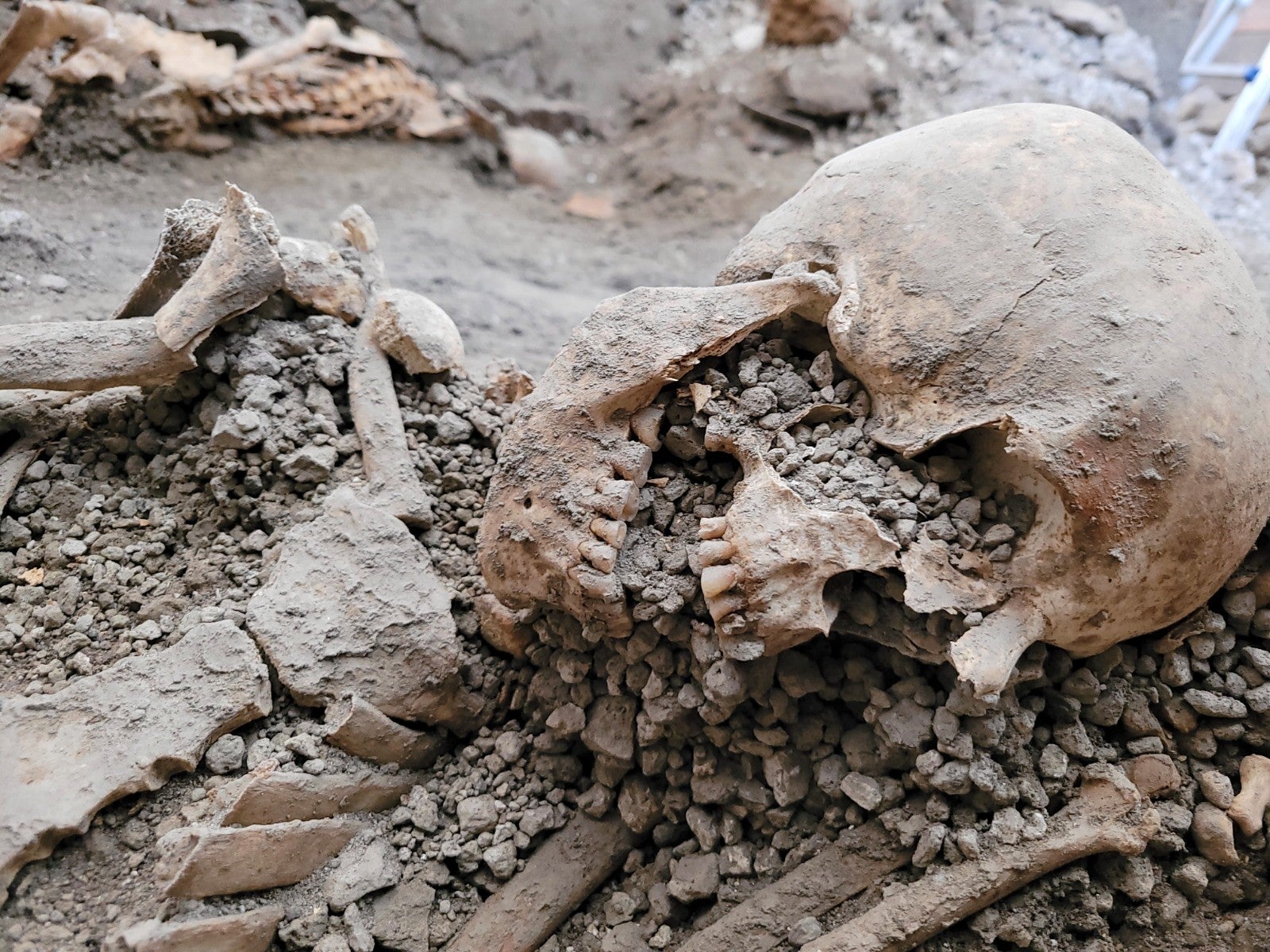Skeletons found in Pompeii ruins reveal deaths by earthquake – not just eruption of Mount Vesuvius
‘Modern excavation techniques help us to better understand the inferno that completely destroyed the city,’ says director of the Pompeii Archaeological Park

Your support helps us to tell the story
From reproductive rights to climate change to Big Tech, The Independent is on the ground when the story is developing. Whether it's investigating the financials of Elon Musk's pro-Trump PAC or producing our latest documentary, 'The A Word', which shines a light on the American women fighting for reproductive rights, we know how important it is to parse out the facts from the messaging.
At such a critical moment in US history, we need reporters on the ground. Your donation allows us to keep sending journalists to speak to both sides of the story.
The Independent is trusted by Americans across the entire political spectrum. And unlike many other quality news outlets, we choose not to lock Americans out of our reporting and analysis with paywalls. We believe quality journalism should be available to everyone, paid for by those who can afford it.
Your support makes all the difference.Skeletons of two people believed to have been killed by an earthquake that accompanied the eruption of Mount Vesuvius nearly 2,000 years ago have been found in the ruins of the ancient Roman city of Pompeii.
The remains were recovered from a building known as the "House of the Painters at Work", and are probably of two men in their 50s, the Italian Culture Ministry said,
The director of the Pompeii Archaeological Park, Gabriel Zuchtriegel, said they were killed not by volcanic ash but by collapsing buildings, noting that wall fragments were found between their fractured bones. The area was likely undergoing reconstruction work at the time of the eruption in AD 79, following an earthquake a few days earlier.
"In recent years, we have realised there were violent, powerful seismic events that were happening at the time of the eruption," Mr Zuchtriegel said.
"Modern excavation techniques help us to better understand the inferno that completely destroyed the city of Pompeii over two days, killing many inhabitants", the German archaeologist added.
Pompeii, 15 miles (23 kilometres) southeast of Naples, was home to about 13,000 people when it was buried under ash, pumice pebbles and dust as it endured the force of an eruption equivalent to many atomic bombs. The Culture Ministry said "at least 15-20 per cent of the population" was killed.
The Pompeii site, not discovered until the 16th century, has seen a burst of recent archaeological activity aimed at halting years of decay and neglect, largely thanks to a recently-concluded €105m (£91m) EU-funded project.
Italy's culture minister, Gennaro Sangiuliano, said conservation and archaeological research efforts would continue.
"The discovery of these two skeletons shows us that we still need to study a lot, do more excavations to bring out everything that is still (hiding) in this immense treasure," he said.
Reuters
Join our commenting forum
Join thought-provoking conversations, follow other Independent readers and see their replies
Comments